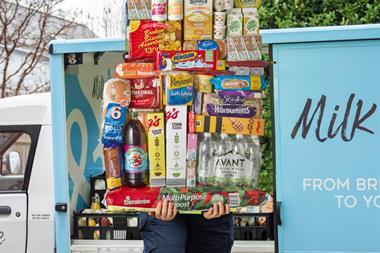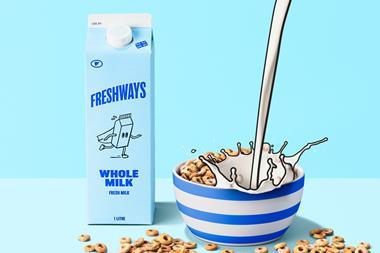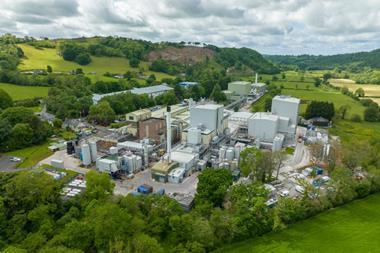Latest government figures show cheese production was still in decline during April.
So far in the first four months of this year UK cheese manufacture has dropped by about 9%, or by 12,000 tonnes, compared with the 137,000 tonnes produced during the same period of 2002.
Cheddar continues to be dominant, making up 62% of total production, while Mozzarella held a 12% share.
Territorial cheese output showed slight growth to take 12% and blue vein dropped back slightly to a 2.6% share.
n red stability
Despite a drop below forecast on Alaska's main red salmon run, prices are expected to remain similar to last year.
No prices have been announced but negotiations will take place over the next three weeks. Another abundant supply of pink salmon will be a serious problem for the canning industry. Canners are only paying 15c/lb to the fishermen but are still making losses estimated at US$5/case of 24x418g.
The question no one seems able to answer is why the industry persists in over-packing.
n fewer almonds
Next year's almond crop is likely to be 8% down on this year, according to the Californian Agricultural Statistics Service.
The forecast is up 9% on previous forecasts, but the crop will still be lighter than the current year's yield, although average kernel weight was up 18%.
n costly currants
The Greek currant market is stable although provincial fruit is still highly priced at around x1,875 a tonne fob Piraeus and Vostizzas unquoted due to unavailability.
The high cost of Greek currants and their scarce supply has led to buyers looking to alternatives with US zante currants attracting attention.
Meanwhile Turkish sultanas have edged higher in the present tight market with specially cleaned no9s now touching $1,200 per tonne fob Izmir. Early crop predictions are for a harvest of about 210,000-220,000 tonnes.
Turkish apricot prices have remained relatively stable over the last month.
Pitted no4s are trading at approximately $2,450 per tonne fob Izmir. With remaining supplies scarce, prices are expected to be maintained at around these levels until new crop supplies start arriving in September.
{{MARKET EDGE }}
Close menu
- Home
- Retail & Wholesale
-
Products & Suppliers
- Back to parent navigation item
- Products & Suppliers
-
Product Categories:
- Back to parent navigation item
- Product Categories:
- Alcoholic drinks
- Bakery
- Cereals & breakfast
- Cheese
- Chicken & poultry
- Chocolate
- Confectionery
- Crisps, nuts & snacks
- Dairy
- Fish
- Fresh produce
- Frozen
- Household
- Meat
- Own Label
- Sauces & condiments
- Seasonal
- Soft drinks
- Vaping
- Vegan & plant-based
- World foods
- Suppliers
- People
- Reports & Data
-
Topics A-Z
- Back to parent navigation item
- Topics A-Z
-
Popular topics:
- Back to parent navigation item
- Popular topics:
- Cost of living crisis
- Crime
- Deposit Return Schemes
- Finance
- Government & Regulation
- Health
- Inflation
- Loyalty
- Marketing
- Mergers & Acquisitions
- New Product Development
- Sourcing
- Supply chain
- Sustainability & environment
- Technology
- Ultra Processed Foods
- Vaping
- A-Z all topics
- Content by type:
- Events
- Subscribe now
Sign in to comment on this article
Not logged in before? Register for FREE guest access today.
You will be able to:
- Read more stories
- Receive daily newsletters
- Comment on stories
Advert

















No comments yet